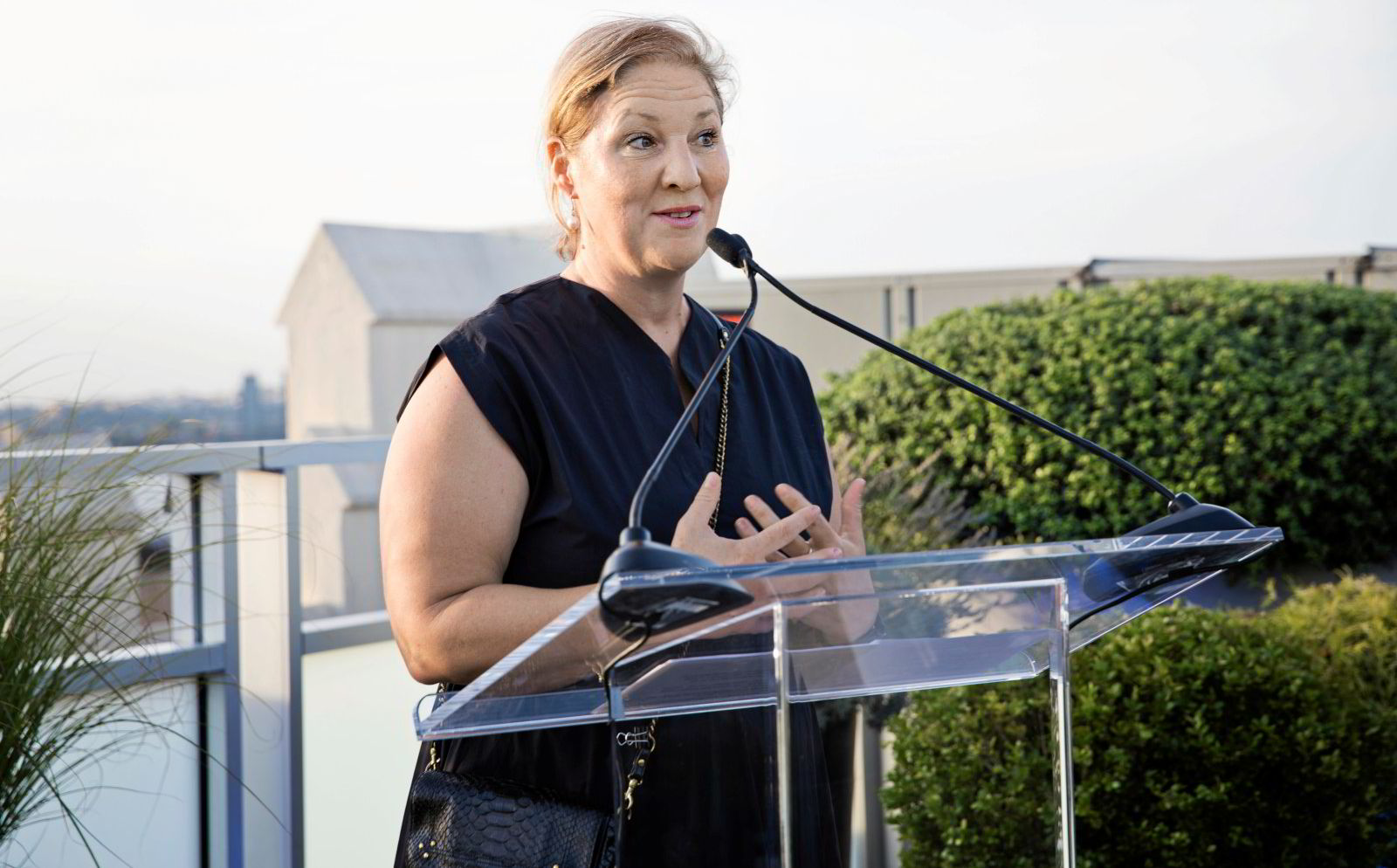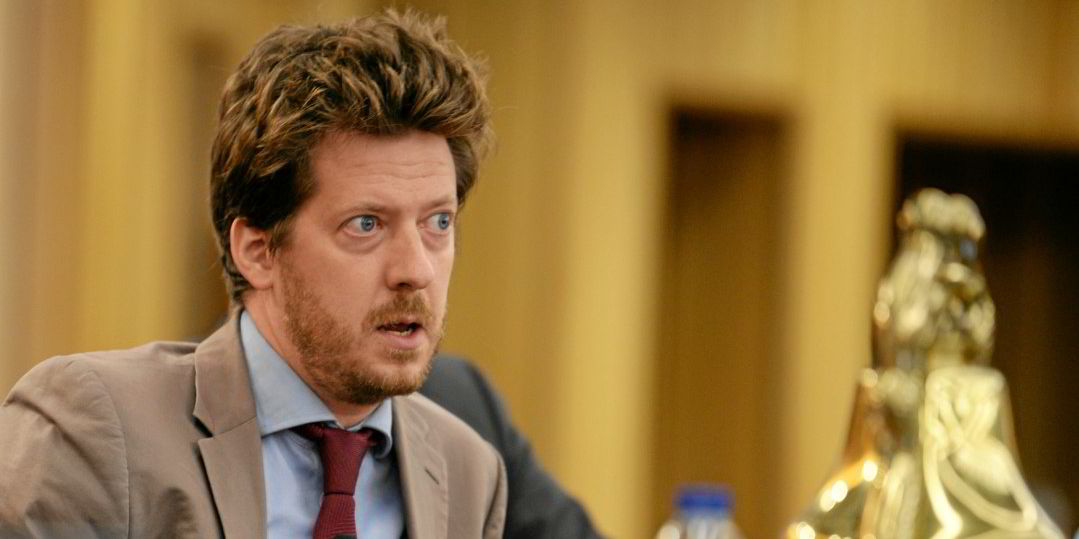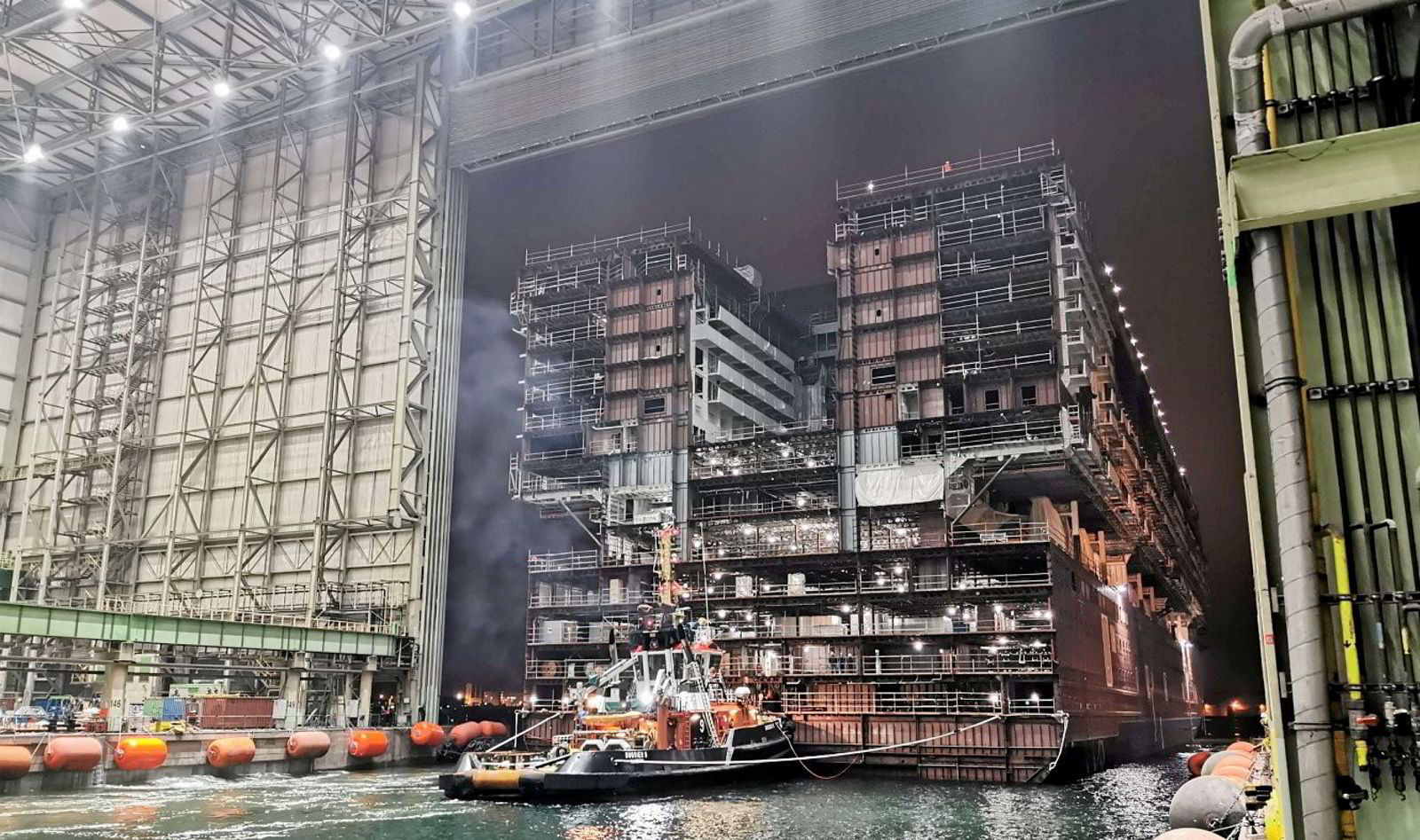Although the International Maritime Organization’s decision to push shipping towards net zero greenhouse gas emissions by around 2050 was not as ambitious or clear as many had hoped, there is little doubt that it has moved the ball forward.
Global Maritime Forum chief executive Johannah Christensen said the new targets are cause for celebration, even though she acknowledged they fall short of a trajectory that is aligned with stopping global temperature rises at 1.5C.
“The outcome really represents a huge step forward and an incredibly important milestone for the industry,” she told Green Seas.

“From my point of view, and from that of the stakeholders that we work with, it really indicates a direction … and a shift towards zero-emission fuels.”
But whether you view the resolution by the IMO’s Marine Environment Protection Committee (MEPC), with its “indicative checkpoints” calling for 20% to 30% emissions cuts in 2030 and 70% to 80% reductions in 2040, as a success or a disappointment, significant work remains ahead for the London-based regulator.
In the months and years ahead, the IMO plans to work on revising short-term measures, adopt midterm measures such as putting a price on carbon and crafting a fuel standard and carry out a study to determine the impact of those policy mechanisms on developing countries.
And then in five years, it will take another look at its climate targets.

“Yes, there are some shortcomings,” said Christensen, whose non-profit organisation has served as a platform to launch multiple decarbonisation initiatives, including the Getting to Zero Coalition.
“But there’s also a clear timeline for how this will be translated into concrete policies.”
That carbon levy
The highest-profile policy debate ahead is creating a mechanism to put a price on carbon.
Many observers would like to see a global levy priced per tonne of CO2-equivalent emissions, while other mechanisms are also being explored, including the International Chamber of Shipping’s “fund and reward” concept that includes incentives for adopting green fuels.

After last week’s 80th meeting of the Marine Environment Protection Committee (MEPC 80), the IMO has scheduled a series of sessions aimed at revising current policy mechanisms and adopting new ones before the start of 2026:
MEPC 81 (spring 2024): A report with interim results of the comprehensive impact assessment of the proposed midterm measures, as well as finalisation of the basket of policy mechanisms to be adopted.
MEPC 82 (autumn 2024): The impact assessment will be finalised.
MEPC 83 (spring 2025): A review of the short-term measures will be completed.
Extraordinary MEPC meeting (autumn 2025): The committee will meet for one or two days to adopt the new and revised policy measures.
The timeline would see the new measures in place by 2027, if the pieces come together in time.
Some countries, including China and developing nations in South America, used the IMO gathering to resist a levy, at least without the results of an impact assessment.
But Christensen said these countries should look to the potential opportunities.
“There are a lot of countries that stand to benefit tremendously from the introduction of a price on emissions in the shipping sector,” she said.
“The fuels that we need in the future, they can be produced in many, many countries around the world that have a tremendous opportunity to unlock new investments into energy infrastructure in their countries.”
Clean fuel standard
A fuel standard, which would require a ratcheting down of greenhouse gas intensity of fuels, has support even from nations that are not on board with a carbon levy.
Tristan Smith, an associate professor at University College London’s UCL Energy Institute, said the fuel standard seems simple, but applying it is not so easy without a carbon levy because it would lack a mechanism to compensate countries that face a disproportionate impact.
“That advantage of a higher level of clarity of fuel demand is associated also with the fact that you don’t have the revenues from the carbon levy, so it’s much harder to do something, which has a distributional effect,” he said.
The Shipyards’ & Maritime Equipment Association of Europe (SEA Europe) praised last week’s decision by the IMO, but described it as a “starting point” for a tough road ahead to develop mandatory measures to achieve the goals.
SEA Europe said the targets and existing rules alone do not provide enough clarity to implement all the available energy-efficiency options and non-fossil-fuel technologies available to the industry.

Paul Altena, who is SEA Europe’s director of taxonomy, international technical and environmental affairs, said that in the effort to secure consensus among a variety of countries, some of those details were left for a future occasion.
Fuels’ life cycle
One such detail was the adoption of guidelines for assessing the emissions of fuels across their life cycle, which do not yet include carbon capture as a way to reduce their greenhouse gas footprint.
“As technology suppliers, we already see that this technology actually is operationalised in practice on board ships at the moment,” Altena said.
“It would be the right time now for the IMO to provide clarity on how to include the greenhouse gas taken out by the technology, so that’s something that we will be pushing for.”
Revising existing rules
Another key upcoming discussion at the IMO will be the revision of its existing rules on greenhouse gas emissions, particularly the Carbon Intensity Indicator (CII). A regulation that entered force at the start of this year, CII grades ships according to their carbon emissions by tonnes carried and distance travelled.

Environmental groups complain that the rule lacks enforcement teeth for ships that achieve low grades, while shipowners and charterers argue that it punishes ships for things outside of their control, such as weather and port waits.
“Our members are very active in cruise shipbuilding, and the current CII for cruise ships doesn’t work — at all whatsoever,” Altena said.
__________
Fresh IMO targets highlight need for full-court press on carbon
On TradeWinds’ Comment page, I argue that while the IMO made progress towards reducing shipping’s greenhouse gas footprint, its failure to align its targets with the effort to halt global temperature rises at 1.5C highlights the need for other entities to help carry the ball forward.
Although there is still ample opportunity to push the IMO to do more, staving off the worst effects of climate change will ultimately require actions by national governments, European Union regulators and private-sector initiatives as well.
Click here to read the article.
__________
‘Net zero’ floating LNG project off Canada moves into key engineering phase
Shipbuilder Samsung Heavy Industries and engineering firm Black & Veatch have won a contract to help develop a floating LNG production project off the coast of British Columbia in Canada that is aiming for net zero carbon emissions.
Western LNG, the Nisga’a Nation indigenous group and Rockies LNG hired the two companies to carry out front-end engineering and design work for Ksi Lisims LNG.
The project will be designed to produce and export 12m tonnes per annum of LNG in a way that will give it “one of the world’s lowest unit carbon emissions rates of any large-scale LNG export projects” in the world, Black & Veatch said.
But achieving net zero emissions will ultimately involve offsets as well.
__________
US judge fines Solvang’s Clipper Shipping in pollution cover-up
A judge in Texas has fined Solvang-controlled Clipper Shipping $1.5m for covering up pollution during an LPG carrier port call off Togo.
District Judge Alfred Bennett, of the US federal court in Houston, also ordered the company to serve 48 months of supervised release, according to the court docket.
Clipper pleaded guilty to a violation of the Act to Prevent Pollution from Ships for failing to report the discharge of oily bilge water from the 60,200-cbm Clipper Saturn (built 2015) in the ship’s oil record book, the US Department of Justice said.



